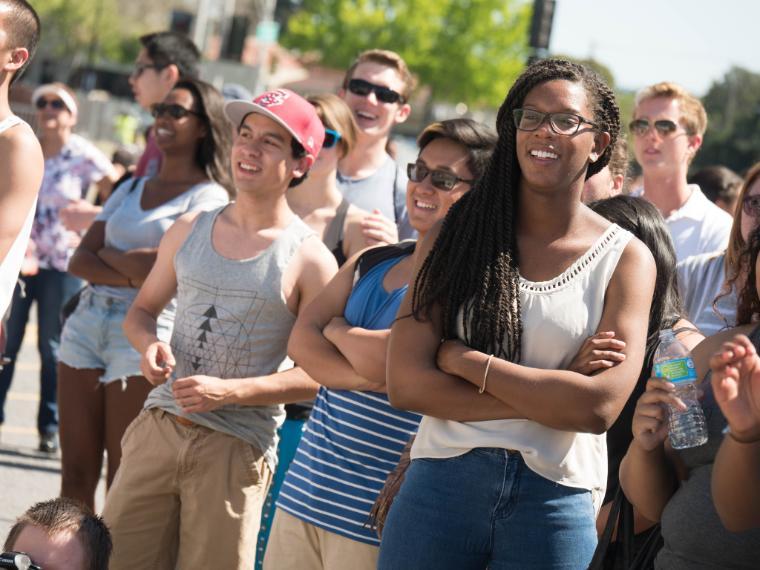

“It is central to our shared Jesuit, Catholic mission to support those in our community who are vulnerable and marginalized. None of us can be satisfied until everyone feels respected, included, and valued. We all have collective ownership of our campus climate.”
Michael E. Engh, S.J., President
Below are some answers to questions we’ve received. Please submit your questions or ideas by clicking the link on this page. This FAQ page is updated regularly, so please check back.
Dr. Susan Rankin of Rankin & Associates Consulting, which is served as the outside consultant for Santa Clara University climate survey, defines campus climate as, “the current attitudes, behaviors, standards and practices of employees and students of an institution.” The climate is often shaped through personal experiences, perceptions and institutional efforts.
Positive personal experiences with campus climate and positive perceptions of campus climate generally equate to successful outcomes. Example successful outcomes include positive educational experiences and healthy identity development for students, productivity and sense of value for faculty and staff, and overall well-being for all.
The idea was to conduct a campus climate survey originated from interested students, faculty and staff who believed data from such a survey might be useful in planning for the future and improving the climate at Santa Clara University.
It is important in campus climate research for survey participants to “see” themselves in response choices to prevent “othering” an individual or an individual’s characteristics. Some researchers maintain that assigning someone to the status of “other” is a form of marginalization and should be minimized, particularly in campus climate research which has an intended purpose of inclusiveness. Along these lines, survey respondents will see a long list of possible choices for many demographic questions. However, it is reasonably impossible to include every possible choice to every question, but the goal was to reduce the number of respondents who must choose “other.”
The consultant provided a final report that included: an executive summary; a report narrative of the findings based on cross tabulations selected by the consultant; frequencies, percentages, means and standard deviations of quantitative data; and content analysis of the textual data. The reports provides high-level summaries of the findings and will identify themes found in the data. Generalizations for populations are limited to those groups or subgroups with response rates of at least 30%.
A total of 2,912 surveys were returned for a 27% overall response rate for the entire SCU community.
Here is a breakdown by group:
32% of Undergraduate students (n=1,724)
12% of Graduate students (n=362)
40% of Faculty (n=370)
38% of Staff (n=456)
The survey will be administered to all students at each Santa Clara University campus. Climate exists in micro-climates, so creating opportunities to maximize participation is important as well as maximizing opportunities to reach minority populations. Along these lines, the consultant has recommended not using random sampling as we may “miss” particular populations where numbers are very small (e.g., Native American students). Since one goal of the project is inclusiveness and allowing invisible “voices” to be heard, this sampling technique is not used. In addition, randomized stratified sampling is not used because we do not have population data on most identities. For example, Santa Clara University collects population data on gender and race/ethnicity, but not on disability status or sexual orientation. So a sample approach could miss many groups.
The findings of the study were released to everyone in the SCU community in October 2018. It showed areas of strength and progress; but also areas that need actions to address. The Executive Summary, Forum Presentation and Final Report are available for download.
Ten priorities have emerged that will receive careful attention and action in 2019. These were identified through conversations and consultations during Fall Quarter 2018 between SCU President Michael Engh and with the Campus Climate Study co-chairs, the Planning Action Council University Policy Committee, and a broad range of community members.
Santa Clara’s campus climate belongs to us all, and each of us can make meaningful contributions to a culture of respect, inclusion, support, and trust. Everyone is invited to participate in large and small ways. It can be through simply asking a question or making a comment by using the link on this page. Or you can volunteer to take an active role in one or more of the initiatives. Raise your hand by clicking the “Get Involved in this Effort” option at right.